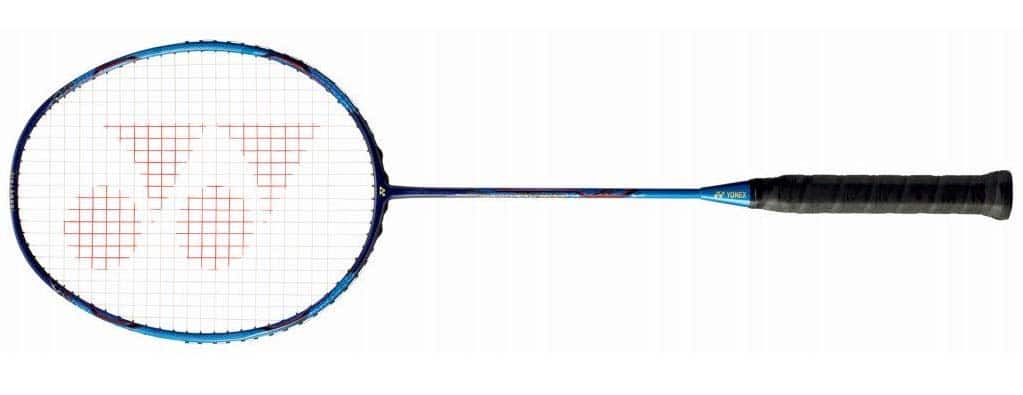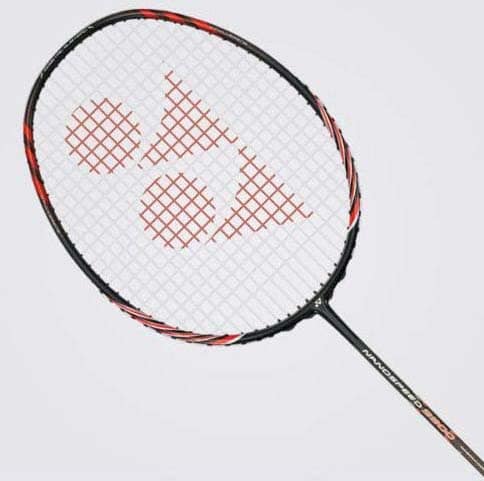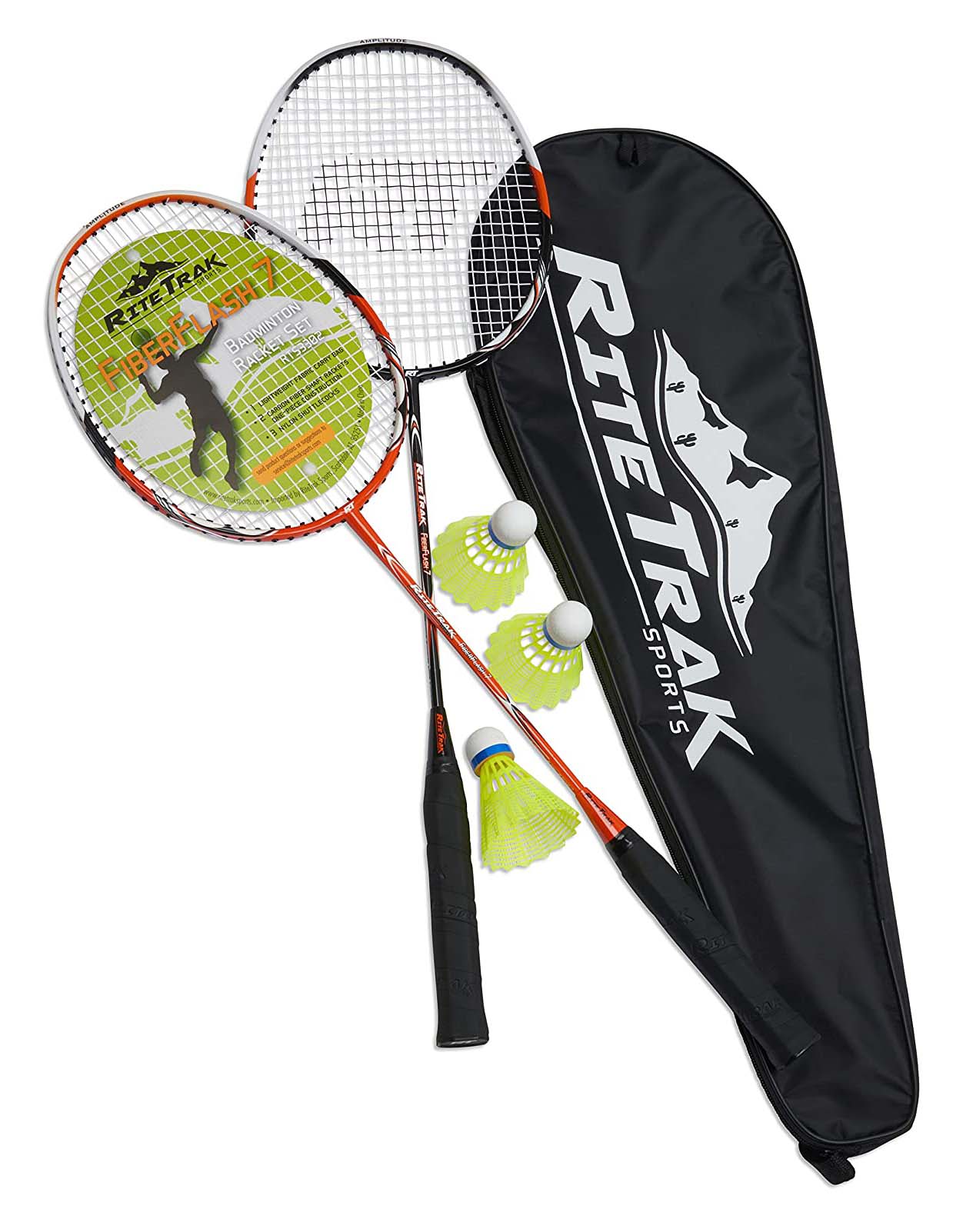Badminton is an excellent sport to begin with, but the cost of a badminton racket could quickly turn anyone away.
Major racket manufacturers realized this issue and have responded by manufacturing an abundance of cheap rackets. People who aren't ready to invest in a costly racket might consider these.
In this article, we will show you the five best budget badminton racket and answer your questions to make the best choice.
Which Are The Best Budget Badminton Rackets?
Image | Name | Key Feature | Ratings | Price |
|---|---|---|---|---|
| ||||
| ||||
| ||||
| ||||
| ||||
|
The low price does not imply cheap in quality. There are a handful of badminton rackets that are budget-friendly as well as good in quality. Among them, we have sorted out the 5 best inexpensive badminton racket. Let's check it out.
This Senston racket is the perfect option if you want to show off your skills. Buying it for yourself would take your game to a whole new level. It is not only the greatest badminton racket for intermediate players but also the best friend.
The set comes with two rackets, one red and one yellow. You just need to set up a net to start playing. The two rackets are one-piece exterior and T-joint within. The rackets are stable and heavy-duty as you desire.
There may be a slight vibration after each smash, which is a minor flaw. The package also includes two shuttles, fluorescent yellow, making them simple to detect.
The shuttles still strive to perform well on the plus side, which is impressive for intermediate players. The handle is comfortable to hold and has a good grip.
For skilled and professional gamers, RiteTrak Fiber Flash is a precise instrument. The shaft and head have a flawlessly smooth connection.
The beams are graphite, whereas other sections are carbon fibre. This package includes three yellow nylon shuttlecocks and 2 FiberFlash seven rackets, as stated in the title.
Carrying your shuttlecocks and rackets is made easier with a tote bag. Fibre Flash rackets are designed for power play, featuring tight strings and high-performance grips.
They are cheap rackets with a good quality/price ratio. They are a great long-term investment for gamers who wish to improve. These rackets are extremely durable due to their design and materials. Each one is 90 grams in weight and 67 centimetres in length.
A great alternative for youngsters is Yonex's Muscle Power 2 Badminton Racquet. This 20-inch racquet is ideal for kids. The aluminium frame and steel shafts are highly sturdy.
This results in a durable racket with a built-in T-joint. As a result, you'll have a racquet that's not only pleasant to use but also portable. This racquet weighs between 90 and 94.9 grams.
This shape also allows for increased muscular power for your youngsters as they learn to play. The "contact" friction also removes the tension and fatigue load.
The Yonex Carbonex 8000 Plus badminton racket is a must-have item in your collection to find the best budget badminton racket under 100.
The Yonex Carbonex 8000 Plus racket has a powerful resonance and impact feel, and the Carbonex box form is a market leader. The Box Shape design reduces impact twisting for improved accuracy and power. The racket is dependable and appropriate for mid-level players with enhanced abilities.
No more, no less, the Yonex Nanoray 10F is ideal for novices and beginners.
This racket features an attractive design, with the Yonex brand emblazoned on the string surface. The racket features an isometric head and is constructed of tough graphite. The isometric head form allows for increased surface area to defend against high-hit projectiles.
As a result of its ability to bear increased string tension without changing shape, the graphite tends to remain undamaged even after hard smashes. A flexible Nano-mesh structure was used to create the shaft's liberation mechanism.
Best Inexpensive badminton racket - Buying Guide
What makes the best cheap badminton racket depends primarily on the way the player plays. If you want to buy a badminton racket, you are spoiled for choice. Several manufacturers offer a wide variety of designs.
All price ranges are represented. So for most players and beginners, the first question that often arises is the price. Is the cheap set enough to get you started, or should it be the more expensive racket?
In the following post, you can learn more about badminton rackets' structure, properties, and characteristics. This should help you find the right club for your style of play.
As a beginner, you are motivated to try something new. You buy new badminton shoes and a badminton racket.
Since you don't know which one to buy, you order one between 10 and 25 dollars. After a short training session, you notice that the racket does not meet your requirements. Badminton rackets are available today in every shape, color, and texture.
Features and structure of Badminton racket
A racket consists of:
- Handle
- Head
- Shaft
- Throat
- Frame
- Stringing
The handle is located at the bottom of the racket and is held by the player. The head consists of the strings that are used to hit the ball. The stringing must consist of crossing strings. The resulting pattern should be uniform at every point in the stringing. The shaft is the connection between the head and the handle.
The frame
The frame of a badminton racket should be as stiff as possible. If the impact is inaccurate, vibrations can occur, transmitted through the rising frame in the arm. This achieves a higher level of precision when striking. However, you should also master the appropriate striking techniques.
A tennis elbow can result from continuous stress due to incorrect hitting. Beginners and children should use a racket with a flexible frame. The hard blows become less precise, but it is gentler on the arm in the long run. Another means of reducing the transmission of vibrations is the use of grip tape.
The dimensions
The racket frame's dimensions are set at 680 mm in length and 230 mm in width. The strings must be 280 mm long and 220 mm wide. If you compete, your racket must be the appropriate size.
The one-piece clubs consist of a single component for the head, shaft, and handle. The head and shaft are joined via a T-shaped connector. The more evenly split the racket is, the more force is sent to the shuttlecock.
The shape of the head
The badminton rules determine the dimensions of the rackets as a whole and the dimensions of the racket heads. Only a few models attain these proportions. For instance, the head of a badminton racket may not exceed 23 cm in width or 29 cm in length. The form of the head determines the region available for a good strike. This region is sometimes referred to as the "sweet spot."
The sweet spot refers to the area on the surface of the stringing of a racket (in racket sports such as badminton, tennis, squash, etc.) where the best acceleration and the best hit precision are achieved.
At the same time, the racket is optimally cushioned so that the rebound of the badminton racket reaches its minimum strength. This area can be in different areas for different models of badminton rackets.
It does not necessarily depend on the geometric center. Depending on the model, the areas can be closer to the neck or head. So it depends on the shape of the head.
The head shapes of badminton rackets can be classified as follows:
- narrow head shape
- normal size
- slightly isometric
The narrow head shape creates a high ball speed due to the small area, whereby the normal size and the slightly isometric racket would be assigned to the all-rounders.
The grip tape
Grips are available in every hue. They minimize vibration transfer from the club to the arm. Additionally, the grip tape's small ventilation pores guarantee that sweat is wicked away. Additionally, they aid in sweat absorption, lengthen the life of the racket, and, in most cases, provide an anti-slip effect and improve grip.
- the grip circumference should be adjusted to the size of the hand
- a good grip tape supports the game
Finding the right handle:
- put your hand around the handle of the club
- The ring finger and middle finger should not touch the ball of the hand
Types of grip tapes:
- Base grip
- Overgrip tape
- Terrycloth grip tape
Reasons for using grip tapes:
- secure grip / hold of the racket
- better control of the badminton racket
- Cushioning of blows
- Dampening of vibrations
- Sweat absorption
Weight and material
The more affordable badminton rackets are often made of aluminum or steel. The heavyweight offsets the low cost of manufacturing.
The lighter materials, by comparison, are used from the mid-price range.
The materials range from carbon to Kevlar.
The objective is to create a racket that is as light as feasible while maintaining a rigid structure. With the weight less than 90 g. assumed. The lightweight enables you to accelerate the ball more quickly. However, with a too-light club, it is impossible to impart a lot of power.
description | weight | Remarks |
easy | 75g - 79.9g | little flywheel |
normal | 80g - 89.9g | agile and good control |
medium difficult | 90g - 93g | All-rounder |
heavy | more than 94g | only for recreational sports |
Nowadays, the flexibility of the shaft is vital in badminton rackets. This feature, on the other hand, is a disadvantage to the racket head. As a result, the stroke's precision diminishes.
It's how far you can rotate the racket head around the longitudinal axis. The shaft's flexibility influences the racket's acceleration. If this is balanced, you can execute powerful strokes at a rapid rate of speed.
The balance
The gravity classifies badminton rackets.
This is a critical property that affects the game. The balance affects the badminton racket's handling.
An example of a good all-rounder is:
You may determine the balance by placing a club on your finger and moving it back and forth until it no longer tilts to one side. This center of gravity may be determined by measuring from the end of the handle to the point at which the club stops tilting.
Handle-heavy
As the name suggests, the center of gravity is near the handle. It enables significantly faster movement. They are a little easier to control with a higher impact precision. It makes them preferred by badminton players for the more defensive and technical game.
The dimensions for the head-heavy racket are 285 mm, and for the light head-heavy rackets up to 285 mm to 290 mm.
Top heavy
In contrast to the other two club types, the clubhead has more mass. As a result, the focus is, of course, close to the head. Due to the greater mass, the racket has more penetrating power, which leads to a higher acceleration of the shuttlecock. The racket is therefore well suited for attacking or more offensive play.
Due to their top-heaviness, these clubs help to reinforce the shot. This benefits the aggressively acting players who often go to work very quickly and aggressively.
The dimensions for the top-heavy racket are 310 mm, and for the light-headed rackets up to 300 mm to 310 mm.
Balanced
The center of gravity is in the middle of the club. You can call this racket an all-rounder. It has no specific properties and is very popular with beginners.
If you want to develop yourself in a specific direction, such as towards an offensive or defensive game, you should forego the balanced rackets. These cannot help you further in terms of specialization.
The dimensions for the balanced badminton racket are 290 mm to 300 mm.
Flexibility
Due to the flexibility of a badminton racket, there are different ways of playing. As already mentioned above, the balance results in the various possibilities to better control the racket and to make his game more powerful.
The flexibility of the shaft is of great importance for your badminton game and is a decisive factor in choosing the best budget badminton racket.
Flexible
Choose the flexible shaft if you are a beginner and have a slow or short stroke, and want more power in your game. The flexible shaft acts as a catapult that generates tremendous force when the badminton racket hits the shuttlecock. In addition, the flexible shaft is more tolerant of unclean strokes, but in return, gives less feeling with the shuttlecock.
Medium Rigid
This solution should be chosen if you are trained to practice badminton players easily. If you have a quick punch and think that power is still necessary, this solution is optimal - whether you are a youth player or a senior player. One disadvantage of the medium stiff shaft is that you still do not entirely control the shuttlecock. In return, you get an excellent all-around badminton racket that gives you relatively great power in your stroke.
Stiff
The stiff shaft is for a trained player who already has good power in your stroke but wants greater control over the shuttlecock. The control is achieved by the badminton racket bending less in the stroke itself, thus giving you more precision to hit the lines more easily.
Extra stiff
The extra stiff shaft is basically for top players and technically very skilled players. With this shaft, you get maximum control and precision in your strokes. On the other hand, the extra stiff shaft requires a swift swing and promising technique in the wrist to achieve the desired power and force in the game.
Buying The best budget friendly badminton rackets - Things to consider
Before buying a racket, the first thing you should do is determine what type of badminton player you are. Badminton rackets from the discounter for 10-20 dollars are more suitable if you want to play badminton on a meadow.
On the other hand, if you are a casual gamer or want to be more ambitious, clubs are between 30 and 50 dollars.
These clubs are more robust and can withstand one or the other contact with the ground or when playing doubles. Also, the price to get started is not that high. So you can test whether badminton will become the new permanent hobby or not.
For the budding professional player, there are, of course, also higher-priced badminton rackets, whereby attention is paid to weight, stringing, and balance, depending on the type of game (defensive or more offensive). Last but not least, the coach will have the best tips ready for their player.
Each player should decide for himself which club best suits their playing style. If necessary, ask specialist retailers or experienced players and coaches in your club for advice.







